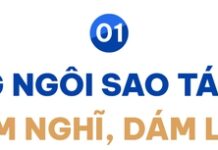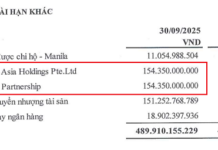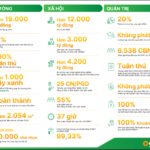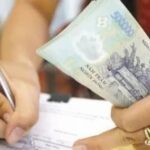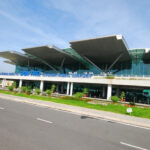A Leap Forward in Financial Inclusion Across the Region
Speaking at the seminar, Deputy Governor Pham Tien Dung emphasized: The success of the banking sector in digital transformation, expanding financial inclusion, and innovating payment services over the past years has been significantly supported by the media, experts, and businesses.
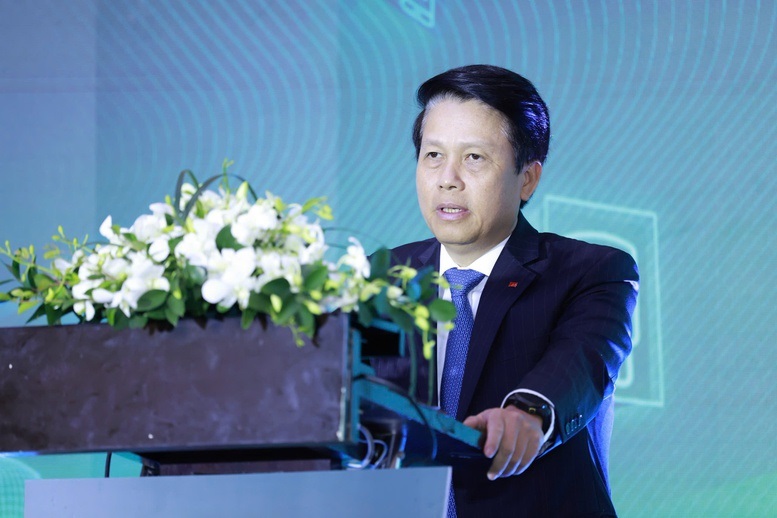 Deputy Governor of the State Bank of Vietnam Pham Tien Dung speaking – Photo: VGP/HT
|
According to Deputy Governor Pham Tien Dung, the past five years have been a period of remarkable breakthroughs for Vietnam’s banking system in digitizing financial services and expanding financial inclusion. Without the widespread dissemination of information by the media, Vietnam would hardly have achieved the rate of 87% of adults with bank accounts, a figure that reflects a significant leap in financial inclusion within the region. This success is not only due to technology but also to the trust and support of the people.
“The media serves as a vital bridge, helping people understand, trust, and develop habits of using safe and convenient banking services,” the Deputy Governor affirmed.
According to Deputy Governor Pham Tien Dung, Vietnam’s payment infrastructure remains fragmented, particularly in public transportation. Currently, urban rail passengers must use different cards for each line, causing inconvenience.
The Deputy Governor analyzed: If the public payment system is unified, it would be a major step toward serving the people. The State Bank has been coordinating with transport agencies for years to find interoperability solutions, but technical standards from sponsors remain a challenge. However, with the participation of the Hanoi Metropolitan Railway Company and commercial banks, the prospects for connectivity are expanding.
The banking sector aims to soon allow the use of bank cards, e-wallets, or mobile apps for direct payments while traveling, eliminating multiple intermediaries.
From the public transportation example, the Deputy Governor expanded the discussion: all banking services in the digital era must be based on three pillars – convenience, reasonable costs, and safety.
“Convenience and value are the key keywords,” he said. “It’s unacceptable for a train ticket priced at 15,000 VND to have a transaction fee of 1,000 VND – that goes against the goal of serving the people,” the Deputy Governor warned.
Deputy Governor Pham Tien Dung noted: Banks must provide fast, easy, affordable, and absolutely secure experiences for customers while maintaining societal trust in the system.
The representative of the State Bank also praised banks and fintech companies for adopting Open API, open banking, and embedded finance, integrating banking services deeply into daily life.
“Banking that feels invisible – the vision the industry is striving for – means people use banking services in all activities without even realizing it. The ultimate goal of digital transformation is to serve people and businesses. Every policy, technology, or initiative is meaningful only when it delivers tangible benefits,” the Deputy Governor emphasized.
Challenges in Ensuring Security and Safety – The Foundation of Trust
According to the Deputy Governor, the banking sector faces new challenges, such as the emergence of digital assets (tokens), stablecoins, artificial intelligence (AI), and modular banking services.
Mr. Pham Anh Tuan, Director of the Payment Department at the State Bank, added: According to data from the Payment Department, in the first eight months of 2025, key indicators for digital payments and transactions grew strongly. Interbank payments increased by 19% in volume and 69.1% in value, while financial switching and electronic clearing rose by 17.25% in volume and 4.5% in value, connecting 68 financial institutions operating year-round.
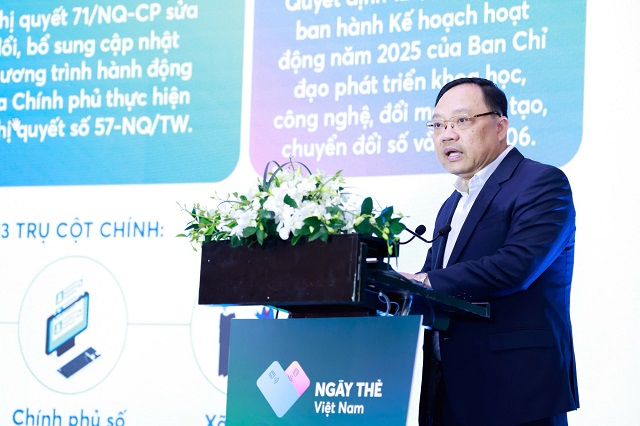
Mr. Pham Anh Tuan, Director of the Payment Department, State Bank of Vietnam – Photo: VGP/HT
|
Notably, cashless payments reached a scale 25 times the GDP of 2024, reflecting the widespread impact of digital transformation in economic life. In the first eight months, transaction volumes increased by 43.53%, and values rose by 24.24%, showing that individuals and businesses have truly shifted to modern payment methods.
Additionally, payment infrastructure continues to expand: nationwide, there are nearly 21,000 ATMs and over 831,000 POS terminals, but notably, ATM transactions are declining (down 16.49% in volume and 5.67% in value), while POS and digital channel transactions are surging. This reflects the inevitable trend of a cashless society, where digital experiences are becoming the norm.
The current digital banking ecosystem covers almost all operations, with many banks achieving over 95% of transactions on digital channels.
Nationwide, there are nearly 21,000 ATMs and over 831,000 POS terminals, but ATM transactions are declining, while POS and digital channel transactions are increasing rapidly – evidence of the inevitable shift toward a cashless society.
According to Mr. Pham Anh Tuan: Alongside service expansion, security and safety remain strategic pillars. Investment in information security now accounts for over 16% of banks’ total technology budgets, demonstrating the industry’s strong commitment.
All service providers have obtained international security certifications such as ISO 27001, PCI DSS, and comply with regulations from the Ministry of Information and Communications.
Collaboration between the State Bank and A05 (Ministry of Public Security) has been strengthened to combat cybercrime and digital fraud. Banks have also implemented fraud alert systems and money tracing using Big Data and AI technologies, enabling faster and more effective responses.
“Notably, the system for sharing data on suspicious accounts, cards, and e-wallets has processed nearly 600,000 accounts, supported alerts for over 440,000 suspicious transactions, and helped prevent approximately 1.6 trillion VND in potential losses…
At this year’s seminar, speakers including economic experts and representatives from organizations such as NAPAS, Vietcombank, Momo, SHB… offered diverse perspectives on open banking, embedded finance, and smart payment trends.
From a business perspective, Mr. Nguyen Hoang Long, Deputy General Director of NAPAS, shared that the network has connected 68 banks and financial companies, processing an average of 35–36 million transactions daily, serving approximately 70 million users.
In 2025, NAPAS expects to handle 11–12 billion transactions, reaching one-third of Vietnam’s population daily. The payment ecosystem, including VCCS cards, NAPAS 247, NAPAS Tap and Pay, VietQR, VietQR Global…, has expanded from public transportation to public services and VNeID. Notably, residents of Ho Chi Minh City can now pay for metro tickets using NAPAS cards, and this will soon extend to Hanoi. NAPAS has also linked VNeID with the banking system, enabling citizens to receive social welfare payments through the app, as seen during the recent 2/9 event. For transaction safety, NAPAS collaborates with the State Bank to deploy the SIMO system, using Big Data and AI for monitoring and fraud alerts, while establishing procedures for tracing money flows between banks.
In international integration, NAPAS has completed cross-border QR payment connections with Thailand, Laos, and Cambodia, and plans to enable payments for Chinese tourists in Vietnam in 2025, before opening the reverse flow in 2026.
“Looking ahead, NAPAS aims to expand connections with Japan, South Korea, and Singapore, thereby extending Vietnam’s payment infrastructure regionally and serving international tourists,” shared the Deputy General Director of NAPAS.
– 20:00 07/10/2025
State-Managed Real Estate Trading Center Set to Launch: Homebuyers to Receive Land Titles in Just 2 Days
The Ministry of Construction is finalizing a pilot project for a Real Estate and Land Use Rights Trading Center, managed by the state, with operations expected to commence in 2026. Once implemented, this model will enable citizens to obtain land ownership certificates (red books) within just two business days.
Unlock Land and Housing Data with Just a Few Clicks
The Ministry of Agriculture and Rural Development, in collaboration with the Ministry of Construction, has finalized a joint plan to develop and integrate a national database for land and housing. This initiative aims to eliminate data redundancy and optimize resource allocation, ensuring a more efficient and streamlined system.








